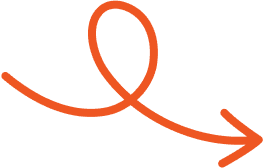Apr 1, 2025
How to Run LinkedIn Ads for Effective Lead Generation
Learn how to run LinkedIn lead gen ads that drive real results. Use advanced targeting and pre-filled forms to attract high-quality leads.
Generating high-quality leads is the lifeblood of any successful business. With 91% of marketers prioritizing lead generation and over half dedicating significant portions of their budgets to it, it’s clear how crucial it is to get it right. But as competition for attention grows, finding effective ways to stand out can feel like a challenge.
That’s where LinkedIn lead generation ads come in. These ads not only help you target the right audience but also make it incredibly easy for potential leads to share their information with just a few clicks. By leveraging pre-filled forms and precise targeting options, you can connect with the people who matter most to your business.
What Are LinkedIn Ads?
LinkedIn Ads are a paid marketing solution that helps businesses reach professionals based on job title, industry, location, and more. They're especially effective for B2B campaigns, allowing brands to target decision-makers directly.
The platform offers several ad formats: Sponsored Content appears in feeds, Message Ads go to inboxes, Text Ads show in the sidebar, and Dynamic Ads use personalized info to grab attention. Built-in features like auto-filled lead gen forms simplify data collection, while the LinkedIn Insight Tag supports retargeting and analytics.
You can use LinkedIn Ads to generate leads, promote events, build brand awareness, or drive traffic. With advanced targeting and performance tracking, it’s a powerful tool for growing your business in a professional space.
Why Use LinkedIn Ads For Lead Generation?
LinkedIn Ads help you generate quality B2B leads by targeting specific audiences based on detailed criteria like job role, company size, and industry. This improves conversion rates by reaching the people most likely to engage.
With over 89% of B2B marketers using LinkedIn for lead generation and 62% seeing success, the platform’s effectiveness is proven. Although it can be more expensive than other platforms, the lead quality often justifies the cost.
Features like lead gen forms, which pull information directly from user profiles, make it easy to collect accurate data. You can customize these forms to match your campaign goals, whether you're gathering emails or scheduling sales calls. Combined with a professional user base, LinkedIn Ads offer a trusted environment to connect with high-value prospects.
Types Of LinkedIn Ads
LinkedIn offers diverse ad formats designed to generate leads effectively, each tailored to specific goals and audience preferences. Use these ad types to optimize your campaigns and reach your target audience strategically.
Sponsored Content
Sponsored Content ads enhance visibility by appearing directly in the LinkedIn feed, marked as "promoted" for user clarity. These ads come in formats like single image ads, video ads, carousel ads, event ads, and document ads.
Single image and carousel ads work well for showcasing individual products or multiple offerings. Video and event ads grab attention, promoting dynamic content or upcoming activities effectively.
Document ads, on the other hand, allow for lead capture by sharing insightful documents with pre-filled lead gen forms. These ads are particularly useful for driving traffic, building awareness, and collecting high-quality leads through professional engagement.
Message Ads
Message Ads allow you to connect with leads via direct communication in their LinkedIn inbox. This format supports attaching lead gen forms, promoting offers, or sharing personalized messages marked as promotional.
By segmenting your audience and addressing specific challenges, you can craft messages that resonate. Personalizing recommendations or offers within these ads increases engagement and response rates. Use this format to nurture relationships, ensuring a professional tone while delivering your unique selling points.
Text Ads
Text Ads are simple, cost-efficient banners that help amplify brand visibility and track performance metrics effectively. These ads include a small image (50x50 pixels), a headline, and concise descriptive text.
Positioned on the right side of the interface, text ads resemble dynamic banners and serve as a subtle yet impactful medium. They can promote introductory offers or drive website traffic. The straightforward design requires sharp copy that appeals to your defined audience segments while staying relevant to their professional interests.
Dynamic Ads
Dynamic Ads personalize user experiences by tailoring ad content to specific LinkedIn members. These ads automatically adapt to include audience names, profile images, or job titles, creating a more relatable approach.
Dynamic Ads appear in three formats: Follower Ads, Spotlight Ads, and Content Ads. These formats allow you to boost brand following, highlight a service, or promote specific content. Their automated personalization ensures engagement by making users feel directly addressed, eventually encouraging interaction and conversions.
How to Create A LinkedIn Ads Campaign For Lead Generation
LinkedIn ads offer a structured approach to generating high-quality leads by accessing specific professional networks. Leverage its advanced targeting, streamlined tools, and intuitive features for effective campaigns.
Setting Up Your Campaign
Begin by accessing the Campaign Manager via the “Advertise” option in the top-right corner or the “Marketing Solutions” menu under “Work” on LinkedIn. Select a campaign group and click “Create Campaign.” Choose “Lead Generation” as the campaign objective to ensure LinkedIn Lead Gen Forms integrate seamlessly with your ad.
Next, select an ad type such as Sponsored Content, Text Ads, or Dynamic Ads depending on your goals. Sponsored Content typically works well for visibility and interaction. Upload ad content in compliance with LinkedIn’s specifications, such as image dimensions and character limits. Set up Lead Gen Forms within the tool, which pre-fill from user profiles for effortless lead sharing.
Defining Your Target Audience
Use LinkedIn’s precise audience targeting tools to focus on specific demographics. Filter by job title, industry, company size, location, or experience to ensure your campaign reaches relevant professionals. For instance, targeting mid-level managers in the healthcare sector in the U.S. aligns content with potential decision-makers.
Further refine the audience with settings like interests, skills, or groups to customize the pool even more. A carefully selected audience improves engagement, allowing resources to be allocated efficiently while increasing conversion rates and ROI.
Crafting Compelling Ad Content
Create content that resonates with your audience and drives action. Use clear visuals, such as images or videos, that align with your message. For example, highlight your offer (e.g., free eBook or consultation) prominently in the ad’s image or thumbnail.
Write concise, impactful ad copy, including a direct call to action like “Sign Up for Your Free Guide.” Keep headlines actionable while focusing on user benefits, such as “Boost Sales in 30 Days.” A/B test variations of visuals, text, and formats to identify what engages your audience the most.
Setting A Budget And Scheduling
Allocate your budget based on campaign goals and audience scale. Choose between cost-per-click (CPC) or cost-per-impression (CPM) bidding models depending on whether the objective is engagement or visibility. Set daily budgets and total caps to manage spend consistently.
Schedule your campaign to run during optimal times based on audience activity. For B2B campaigns, weekdays typically yield better results, particularly during business hours. Continuous performance monitoring ensures timely adjustments to bidding, pacing, or ad distribution.
Optimizing LinkedIn Ads For Better Results
LinkedIn Ads, when configured strategically, can deliver exceptional results for lead generation. Focusing on detailed testing, performance analysis, and precise retargeting enhances ad effectiveness.
A/B Testing Your Ads
A/B testing ensures your LinkedIn ads resonate with your audience by comparing variations of your campaigns. Test headlines, ad creatives, introductory text, and calls-to-action to determine what performs best. Keep only one variable distinct between versions for clear results. For example, compare two ad creatives while keeping the audience and text identical.
Evaluate performance using metrics like clickthrough rates (CTR), conversion rates, and lead cost. When one version outperforms another, scale it for broader audience engagement. Regularly update tests based on campaign data, as audience preferences evolve.
Analyzing Performance Metrics
Analyzing metrics uncovers the effectiveness of your campaigns. Prioritize tracking leads, CTR, conversion rates, and cost per lead (CPL). For instance, if CTR is high, but conversions are low, refine the offer or landing page to align with user expectations.
Monitor LinkedIn campaign tools to download leads, segment data, and assess trends. Compare performance across demographics like job roles or industries to identify which groups convert better.
Use insights to allocate budgets toward segments providing higher ROI. Consistent analysis aids in fine-tuning strategies, reducing ad spend, and improving lead capture precision.
Retargeting Strategies
Retargeting re-engages potential leads who interacted with your ads but didn’t convert. Create custom audiences by segmenting users based on website visits, specific page views, or engagement with previous LinkedIn campaigns.
Retarget with personalized ads addressing prior interactions. For instance, if users viewed a whitepaper offer but didn’t sign up, design ads emphasizing its benefits or offering added incentives.
Use LinkedIn’s Matched Audiences for precise targeting of past engagers. Employ dynamic ads to create tailored experiences, boosting conversion likelihood within this audience subset. This strategic approach nurtures leads and builds deeper engagement over time.
Conclusion
LinkedIn Ads provide a powerful solution for generating high-quality leads in a professional environment. With precise targeting, versatile ad formats, and seamless lead gen tools, you can connect with the right audience and achieve meaningful results. While the initial costs may be higher, the quality of leads and potential ROI make it a worthwhile investment for B2B marketers.
To get the most out of your efforts, it helps to pair strong ad strategies with consistent, high-performing content. A tool like Typoro can make that easier by helping you write, optimize, and schedule posts that support your campaigns and keep your audience engaged.
Start Your 7-Day Free Trial
Experience the full power of Typoro with a 7-day free trial. Create, optimize, and schedule LinkedIn posts effortlessly while tracking your growth. No commitment. Cancel anytime.
Credit card required. Cancel at anytime.









